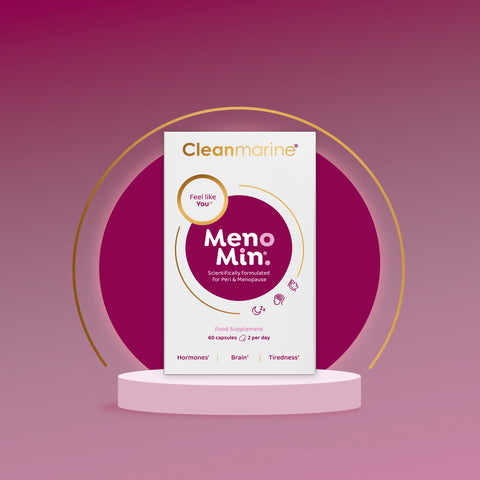Could changing hormones affect your joints? The menopause is a natural part of ageing and it marks the end of a woman’s fertility. As the menstrual cycle begins to shut down levels of female hormones such as oestrogen and progesterone start to fall and eventually reach a level that is no longer capable of activating a monthly cycle.
Your GP can carry out a blood test to officially determine if you are transitioning through the menopause. But if joint aches and pains coincide with changes in periods, periods stopping, the arrival of hot flushes, night sweats or episodes of fatigue and anxiety then this maybe evidence to suspect that the menopause could be a contributing factor!
Menopause. A possible trigger for aching joints
Although there are no official statistics for the prevalence of menopausal arthritis there is evidence that menopausal women experience a higher prevalence of musculoskeletal issues compared to premenopausal women. Researchers also say that menopausal joint pain is likely to be worse if you are also stressed, overweight or suffer from a negative mood. The link between oestrogen and bone and joint health is well established and it’s recognised that falling oestrogen levels result in poor bone regeneration which sets the scene for inflammation, joint pain and swelling. Prior to the menopause oestrogen works by minimising swelling around the joint spaces helping to support flexibility, movement and quality of life. It’s high impact joints that tend to fall prone to this menopausal form of arthritis, so you may first notice symptoms in your knees, hips, hands and wrists.
Escalating pain
Scientists are still uncovering the precise mechanisms between oestrogen and joint pain, but studies are starting to indicate that oestrogen influences the way in which women experience pain. Researchers at the University of Kansas Medical Centre have discovered that as oestrogen levels drop during the menopause a protein called BMP4 becomes more active and increases the number of pain-sensing nerves which effectively turns up the volume of any pain sensations.
Natural plant oestrogens
It’s thought that the fluctuating oestrogen levels during the menopause trigger many of the common menopausal symptoms to flare-up. There are now various studies that indicate that phytoestrogens found in plants help to support hormone balance. Types of phytoestrogens can be found in miso, tamari, edamame, chick peas, mung beans, red clover, alfalfa, oats, flax seeds, sesame seeds, fennel and pinto beans – that’s quite a number of foods to add to your shopping list!
Head to the Med!
Cutting down on foods rich in refined carbs (white bread, pasta, white rice, sugary snacks and drinks) and saturated fats (red meat, diary products and processed foods) whilst increasing complex carbs (lentils, pulses, wholegrains), fresh vegetables, fruits, nuts and oily fish is sensible nutrition advice for supporting joint health and hormone balance. This Mediterranean style of eating supplies a variety of antioxidant nutrients that help neutralise the harmful effects of free radicals generated by oxidative stress and inflammation. Eating oily fish brings in essential omega-3 fats which the body uses to produce anti-inflammatory prostaglandins needed to help cope with pain and inflammation.
Keep moving, keep flexible
You get to a certain age and the phrase ‘use it or lose it’ starts to become more meaningful. Gentle, regular exercise with a course of physiotherapy may help ease the chances of stiff and aching joints from becoming even more troublesome. Swimming may be of real benefit, letting the water support your body weight helps give the joints a well-earned rest. Taking steps towards a healthier diet and lifestyle is a positive way to support joint health during this phase of hormonal change.
References
- Aritra Bhattacherjee, M.A.KarimRumi, HinrichStaecker and PeterG.Smit Bone Morphogenetic Protein 4 Mediates Estrogen-Regulated Sensory Axon Plasticity in the Adult Female Reproductive Tract The Journal of Neuroscience, January 16, 2013. 33(3):1050–1061
- Gao HL1, Lin SQ, Wei Y, Chen Y, Wu ZL. The effect of age and menopausal status on musculoskeletal symptoms in Chinese women aged 35-64 years. Climacteric. 2013 Dec;16(6):639-45. doi: 10.3109/13697137.2013.769095. Epub 2013 Feb 15.
- Dr C. E. Szoeke, F. M. Cicuttini, J. R. Guthrie & L. Dennerstein The relationship of reports of aches and joint pains to the menopausal transition: a longitudinal study. Journal Climacteric. Volume 11, 2008 - Issue 1
- Carmignani LO, Pedro AO, Costa-Paiva LH, Pinto-Neto AM. The effect of dietary soy supplementation compared to estrogen and placebo on menopausal symptoms: a randomized, controlled trial. Maturitas. 2010;67:262–9.
- Jorge A Roman-Blas, Santos Castañeda, Raquel Largo, and Gabriel Herrero-Beaumont. Osteoarthritis associated with estrogen deficiency. Arthritis Res Ther. 2009; 11(5): 241.




